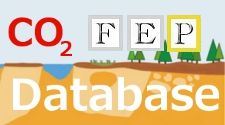
Of the many methods that have been proposed to reduce the amount of CO₂ that is released to the atmosphere, geological storage of CO₂ is starting to be tested in many projects worldwide. Widespread deployment of such technology will depend on gaining acceptance for the technology from policy makers and the general public. Hence there is a clear requirement for risk assessments to be carried out in a systematic and transparent way.
The fundamental basis for any systems analysis or risk assessment is a comprehensive database of features, events and processes (FEPs) relating to the possible ways in which the system could evolve. Taking a structured approach to compiling and ordering FEPs facilitates their comprehensiveness, and making the information available online aids transparency.
Since 2004, Quintessa has provided a structured online FEP database for geological storage of CO₂ and this currently has over 1000 registered users throughout the world. The FEPs in the database have been included for their relevance to the long-term safety and performance of the storage system after injection of CO₂ has been completed and the injection boreholes have been sealed. The database currently includes over 200 FEPs in a hierarchical structure, with individual FEPs grouped into eight categories. Each FEP has a text description and an associated discussion of its relevance to long-term performance and safety. Key references from the published literature are included to enable retrieval of more detailed information for each FEP. The database incorporates hyperlinks to other relevant sources of information (reports, websites, maps, photographs, videos, etc.), and is searchable in a variety of ways.
The development of the database has been supported by the UK Department of Energy and Climate Change (DECC) and can be accessed through the web site of the International Energy Agency Greenhouse Gas R&D Programme (IEAGHG). The database is freely available to anyone with an interest in Carbon Capture and Storage in order to improve the transparency of the debate.
A review of its use, which was presented at the GHGT10 conference, revealed the database to be a proven valuable tool for 'top-down' auditing and 'bottom-up' conceptual model building and has thereby helped to build confidence in wide-ranging long-term geological storage assessments. The database continues to be developed (e.g. for the marine environment) and suggestions for further improvements are always welcome.